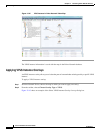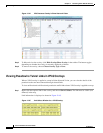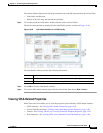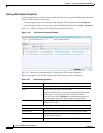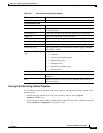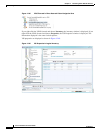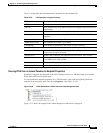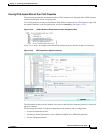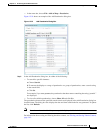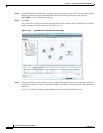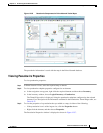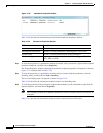
12-87
Cisco Prime Network 4.0 User Guide
OL-29343-01
Chapter 12 Monitoring Carrier Ethernet Services
Working with VPLS and H-VPLS Instances
Table 12-38 describes the information that is displayed for the selected VSI.
Viewing VPLS Core or Access Pseudowire Endpoint Properties
Pseudowire endpoints are displayed under VPLS Instance (Access) or VPLS Forward (Core) in the
Prime Network Vision navigation pane.
To view pseudowire endpoint properties for a VPLS instance, right-click the required pseudowire
endpoint in the navigation pane, and choose Properties. (See Figure 12-50.)
Figure 12-50 VPLS Pseudowire in Prime Network Vision Navigation Pane
Figure 12-51 shows an example of the Tunnel Properties window that is displayed.
Table 12-38 VSI Properties in Logical Inventory
Field Description
VSI Name VSI name.
VPN ID VPN identifier used in an MPLS network to distinguish between different
VPLS traffic.
VSI Mode VSI mode: Point-to-Point (default) or Multipoint.
Discovery Mode VSI discovery mode: Manual, BGP, LDP, RADIUS, DNS, MSS/OSS, or
Unknown.
Operational State VSI operational status: Up or Down.
Administrative State VSI administrative status: Up or Down.
Local Bridge Local bridge, hyperlinked to the bridge in logical inventory.
Pseudowires Table
Pseudowire ID Pseudowire identifier, hyperlinked to the Tunnel Edges table under
Pseudowires in logical inventory.
Autodiscovery Whether the pseudowire was automatically discovered: True or False.
Split Horizon SSH pseudowire policy that indicates whether or not packets are forwarded
to the MPLS core: True or False.
Pseudowire Peer IP IP address of the pseudowire peer.
Pseudowire VC ID Pseudowire virtual circuit identifier.




